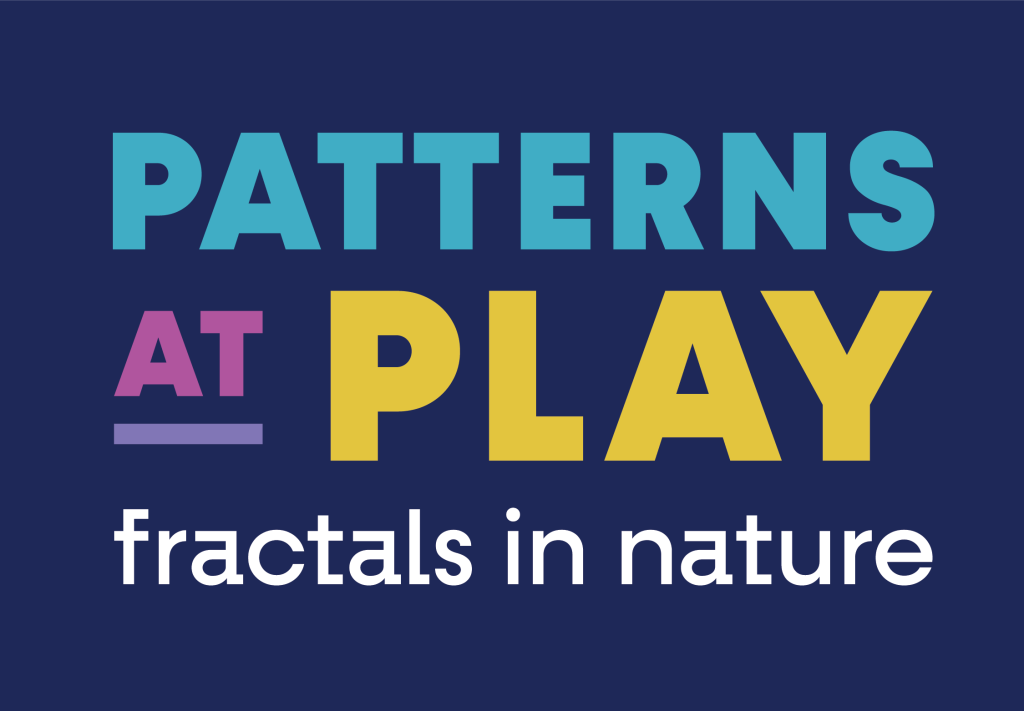Patterns at Play: Fractals in Nature
February 22, 2025 – October 5, 2025
When you look closely, the natural world is packed full of patterns. But one stands out among the rest.
Fractals are never-ending patterns that repeat the same shape at bigger and smaller scales. From mountain ranges and the galaxy to snow crystals and brain neurons, fractals big and small exist all around us.
Artists, mathematicians and naturalists have noticed these patterns for centuries. Yet it was not until 1982 that mathematician Benoît Mandelbrot published The Fractal Geometry of Nature. Mandelbrot proved that geometric equations could measure nature’s seemingly haphazard patterns.
And as it turns out, the universe is not so disorderly after all. Nature has a way of arranging itself into repeating shapes: Trees grow by branching and branching again, seashells swirl around and around, and minerals form consistent layers.
“Fractals are everywhere in nature,” said Museum Donald M. Kerr Curator of Natural History Hayley Brazier, Ph.D., “from the tiniest, tiniest neuron in the brain to the organization of stars and planets in the galaxy. We want visitors to experience first-hand how those patterns build the natural world around us.”
Patterns at Play: Fractals in Nature (February 22 – October 5) is an original exhibition that invites you to take a closer look at the universe’s curious practice of self-organization. An immersive, family-friendly experience, the exhibit encourages you to build your own patterns while an animation creates new fractals right before your eyes. Visitors should expect to play, touch, listen and watch in this whimsical exploration of nature.
Fractals start with one simple shape, such as a triangle. When the same triangle is repeated over and over, either small or large, the result is a more complicated pattern that can scale. Some fractals are symmetrical and precise; others can be beautifully chaotic.

Today, experts in the fields of biology, geometry, physics, astronomy and computer graphics are using fractals to explore the secrets of the universe. Human health is important in this story, too. The study of biophilia is proving that our brains are soothed when we see, hear and interact with fractals.
“Humans have evolved alongside nature’s fractals,” said Brazier. “Seeing fractals, building fractals and even listening to sonic fractals is soothing for our brains and reduces stress.”
As such, bean bag chairs and soft music encourage visitors to the Brooks Gallery at the Museum to sit, relax and be mesmerized by the magic of nature. Central to the Patterns at Play exhibition is the back wall, which features a large projector showcasing fractals that dance across the screen. Six macro images of nature, including snow crystals, a galaxy and brain neurons, grace the side walls in a floor-to-ceiling collage. The vibrant colors immerse you in nature’s whimsical and enigmatic patterns.
Fractals can range from simple to infinitely complex. But don’t let their complexity stop you from spotting them everywhere: clouds, pine cones, shorelines, mountain ranges and bark are hiding in plain sight. Pause to notice these fractals—your mind will appreciate it when you do.
“Nature is always surprising us and teaching us,” said Executive Director Dana Whitelaw, Ph.D. “The fractals exhibition is truly about exploration, excitement and engagement, from the smallest hands interacting with shapes to a grandparent studying how math and nature intertwine. We look forward to experiencing nature’s patterns with the community.”
Step inside this fun, funky and family-friendly exhibit. You can learn to build a fractal, listen to the sound of sonic fractals, relax in a bean bag chair and watch an animation create new fractals right before your eyes.
Are you ready to be mesmerized?

“Fractals are everywhere in nature, from the tiniest, tiniest neuron in the brain to the organization of stars and planets in the galaxy. We want visitors to experience first-hand how those patterns build the natural world around us.”
— Museum Donald M. Kerr Curator of Natural History Hayley Brazier


